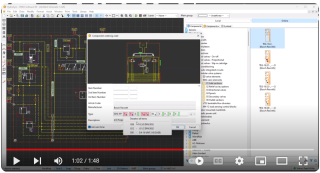In today's fast-paced industrial landscape, companies are constantly seeking innovative ways to enhance their manufacturing processes. One such strategy gaining significant traction is the utilization of software for product configuration. By implementing advanced software solutions, industrial companies can streamline and optimize their product configuration workflows, leading to improved efficiency, cost savings, and enhanced customer satisfaction.

Let's explore how industrial companies are leveraging software for product configuration and discover the numerous benefits they stand to gain.
Efficiency through Automation:
Gone are the days of manual product configuration, which was time-consuming and prone to errors. Industrial companies now rely on software solutions that automate the entire configuration process. These software systems allow companies to create digital catalogs of product components, rules, and constraints, enabling engineers and sales teams to quickly configure products based on customer requirements. With automation, companies can reduce the time and effort required for product configuration, enabling faster response times and increased productivity.
Accurate and Error-Free Configurations:
Product configuration software eliminates the risk of human error that often accompanies manual configuration processes. By defining rules and constraints within the software, companies can ensure that every configuration adheres to design specifications, technical limitations, and compatibility requirements. This significantly reduces the likelihood of incorrect configurations and subsequent rework, leading to improved product quality and customer satisfaction.
Customization for Diverse Customer Needs
Industrial companies often encounter customers with unique and specific requirements. Product configuration software allows for effortless customization, enabling companies to tailor products to meet individual customer needs. Whether it's selecting specific features, dimensions, materials, or accessories, the software ensures that customers receive precisely what they require. This level of customization enhances customer loyalty, as it demonstrates a company's ability to deliver products that align perfectly with customer expectations.
Rapid Prototyping and Time-to-Market:
Product configuration software enables industrial companies to expedite the prototyping process, minimizing the time it takes to transform customer specifications into tangible product designs. By integrating the software with computer-aided design (CAD) systems, companies can generate accurate 3D models and prototypes based on the configured product specifications. This accelerated prototyping allows for faster iterations, improved collaboration between engineering and sales teams, and reduced time-to-market for new products.
Optimized Resource Allocation:
Efficient product configuration software provides industrial companies with a comprehensive overview of the components, resources, and costs associated with each configuration. This visibility empowers companies to optimize resource allocation by identifying bottlenecks, managing inventory efficiently, and streamlining the procurement process. As a result, companies can make informed decisions that maximize resource utilization, minimize waste, and enhance cost-effectiveness.
Enhanced Sales and Customer Experience:
Product configuration software serves as a powerful tool for sales teams, enabling them to engage with customers in real-time, understand their requirements, and provide instant quotes and visualizations. With accurate pricing information, visualization of configured products, and real-time collaboration capabilities, sales teams can deliver an exceptional customer experience. Furthermore, software-integrated configurators can be deployed on websites or mobile applications, allowing customers to configure products independently, promoting self-service and enhancing the overall buying experience.
As industrial companies strive to remain competitive in an increasingly complex marketplace, adopting software for product configuration has become a strategic imperative. By leveraging automation, accuracy, customization, rapid prototyping, optimized resource allocation, and enhanced sales experiences, companies can unlock numerous benefits. The use of advanced product configuration software empowers industrial companies to efficiently meet diverse customer needs, reduce time-to-market, improve productivity, and ultimately strengthen their position in the market.